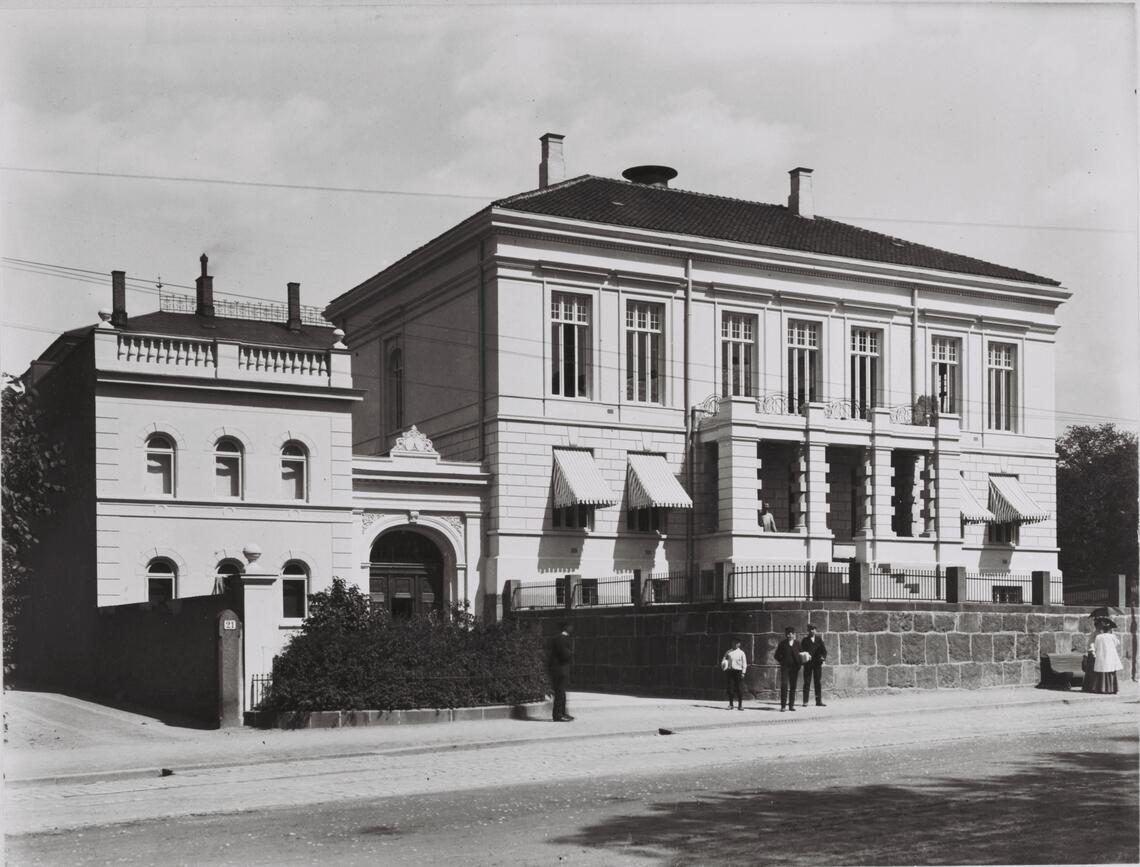The building

The Nobel Institute has been located in the venerable building on Henrik Ibsen street (former Drammensveien) since 1905. The property is owned by the Nobel Foundation, with the Norwegian Nobel Committee and Nobel Institute having been granted exclusive usage rights.
... the Nobel Foundation hereby transfers said property to the Nobel Committee of the Norwegian Storting, to control, utilize and manage, free of charge... As a result, the Nobel Foundation has no right, without the consent of the committee, to sell or mortgage the property or possess any part of it.
Notarized letter, dated 12 December 1903
Architecture
The owner of the building at the time of purchase in 1903 was consul general Chr. Christophersen. The well-known architects Carl and Jørgen Berner were commissioned to carry out the reconstruction. Carl Berner designed much of the interior in the "art nouveau" style popular at the time, as opposed to the neo-classical design of the exterior. The meetings of the Nobel Committee were for many years held on the second floor, but in the late 1940s the committee room was moved one floor up to make room for staff offices on the second floor. Most of the original furniture from the committee room has been preserved, and when the Nobel Committee members convene they still take their seats around the table designed by Jørgen Berner in 1905.
Modernization
The exterior of the building underwent extensive reconstruction in 1947 in conjunction with the expansion of Drammensveien and the raised level of adjoining streets. A renovation of the building’s interior was initiated simultaneously, and the Committee room was relocated one floor up from its original placement. The library was expanded in 1954 and was granted more space for stacks. The interior of the building also underwent comprehensive renovation and modernization in 1984-85, 1991 and 1997. During the latter two of these projects, the buildings attic and the second floor in the porters lodge were transformed into research offices.
Conservation
The building’s exterior and original interior were listed in 1995 as worthy of preservation and protection. The conservation assessment strongly advised reverting the building to its original architectural expression, detailing and material when undertaking larger renovation projects. This appeal was used as a guide during the renovations of the administration and library offices in 2014 and 2015. After the renovation the rooms' ceiling, moldings, and parquet floors pay tribute to the original carpentry from 1905. A few strips of the original wallpaper was found hidden behind two drywalls now removed. These strips have been cleaned and preserved, and were the foundation for the selection of colors on the remaining walls.
Renovation
Similar renovation projects where initiated in the Great Hall in 2015 and 2016. The original color from 1905 was brought back, making the details on the ceiling stand out more clearly. Additionally, the chandeliers were cleaned crystal by crystal, and the windows were given new valances. In 1905 the Great Hall featured natural brick doorways and columns, and veined marbled dados. These were later covered with plaster and paint, but the original details were uncovered during the summer of 2016 with financial support from the City of Oslo Cultural Heritage Management Office. The modern paint was removed layer by layer, exposing the historical walls, columns and doorway, bringing them back into the light.
The original rostrum from 1905 has also been carefully restored and placed on a refurbished stage floor. With the exception of the chairs and the stage backdrop, the Great Hall now presents itself as it did when the Nobel Institute moved in at the beginning of the last century.
In 2020, the building's facade and window frames were painted in what are assumed to be the original colours.





















